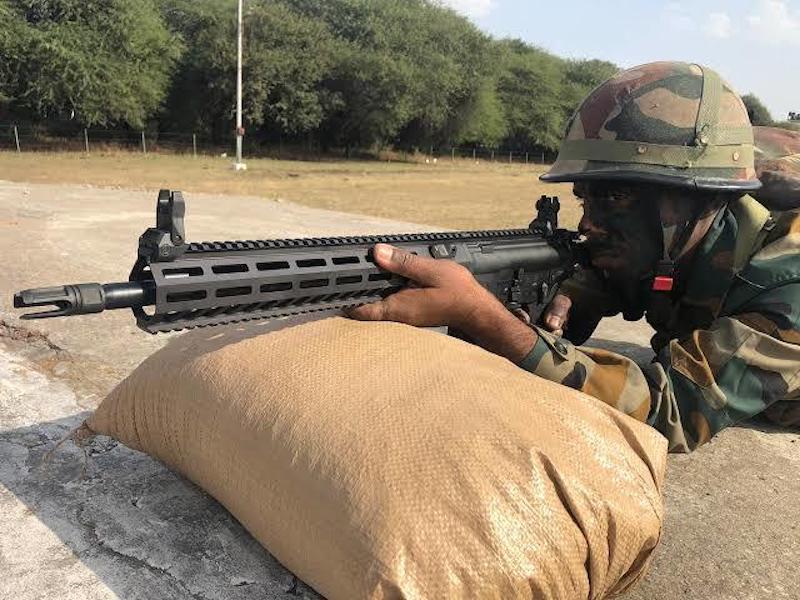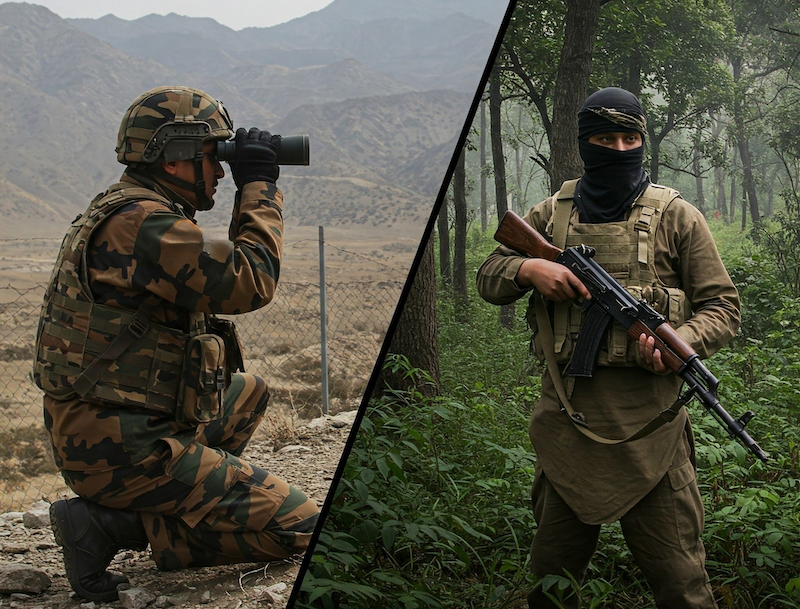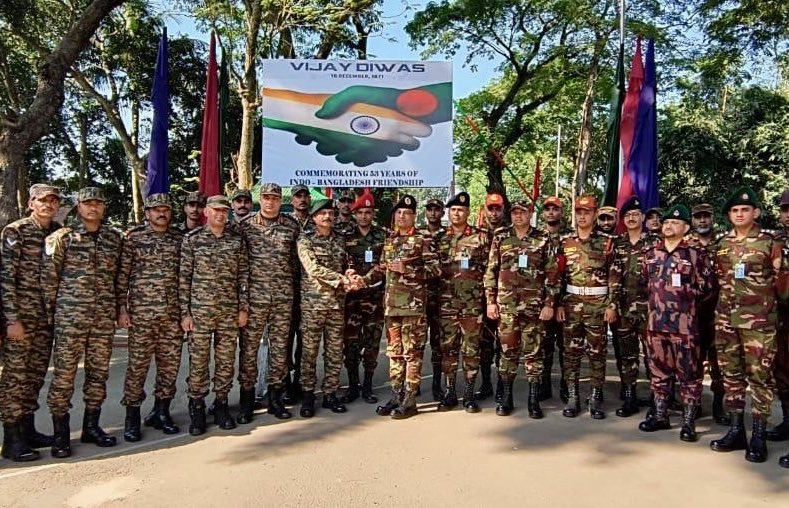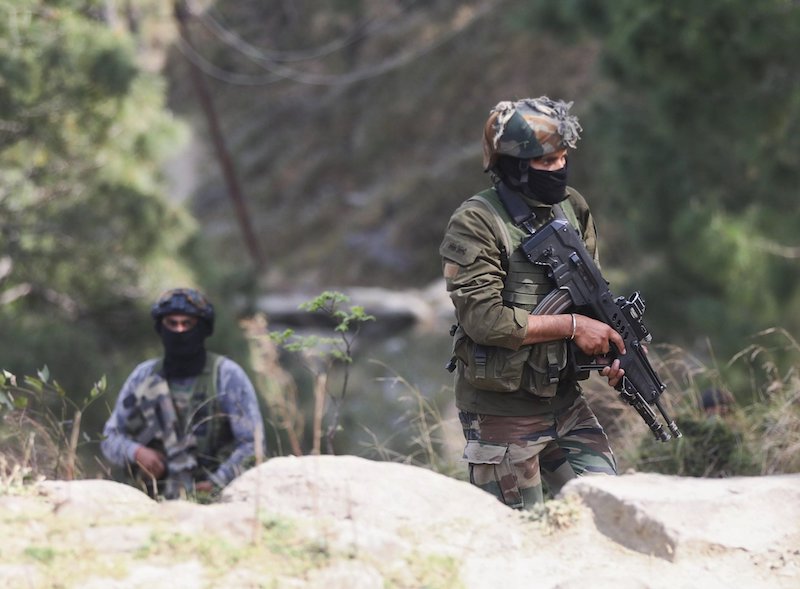 An Indian Army soldier practising with a SIG 716i assault rifle. (File photo)
An Indian Army soldier practising with a SIG 716i assault rifle. (File photo)
Recently, the Ministry of Defence concluded a deal with the United States-based SIG Sauer Inc to import 73,000 SIG 716i “patrol” rifles for ₹840 crores to meet the “urgent requirement” of the armed forces, especially the Indian Army. The deal drew criticism from local defence manufacturers, especially from Vivek Krishnan, CEO of SSS Defence – a Bangalore-based private small-arms manufacturer. In a long post on X, Krishnan criticized the recent deal and questioned the Narendra Modi government’s “Make in India” initiative.
Some may counter Krishnan’s remarks [archived link] as a normal criticism by a local manufacturer who lost out on a business contract, but this deal certainly throws more questions than answers. The country needs to know the facts.
This deal is an extension of what happened earlier. The armed forces have been looking for a good assault rifle for the soldiers for nearly three decades. Twenty-five years ago, during the Kargil war, the Army started rolling out the indigenously made Insas (Indian Small Arms System) rifles to replace the heavier and near-obsolete SLRs, which was the mainstay of the infantry for decades.
Read also: Erosion of India’s armed forces is a cause for national concern
However, the Insas showed major flaws during operations and the adverse feedback from armed forces, especially the Army, made the defence ministry start looking for a new weapon within a very short period. Apart from this, the changed battle scenario in modern times necessitated the need for a good weapon system.
Finally, after years of dragging its feet, in 2020, the defence ministry procured 72,400 SIG Sauer’s SIG 716 assault rifles for the Army’s “frontline troops” and some for the Indian Navy and the Indian Air Force from SIG Sauer for approximately ₹700 crores. This was touted as an “emergency” purchase due to the Indian Army’s stand-off with China’s People’s Liberation Army at several points along the line of actual control (LAC), especially in eastern Ladakh.
Soon after this purchase, the defence ministry included the assault rifles in the list of military items it no longer plans to import. It was the government’s “Atmanirbhar” (self-reliance) initiative to reduce import dependency. Accordingly, it issued licences to manufacture these rifles to local defence manufacturers – one of them being the SSS Defence.
Read also: Have the armed forces been discriminated against?
Therefore, the defence ministry’s recent nod to import an additional 73,000 SIG 716 assault rifles is in clear contravention to its own commitment. This also indicates that the Indo-Russian Rifles Private Limited (IRRPL), a joint venture between Russia and India launched in 2019 to manufacture AK-203 assault rifles at Karwa in Uttar Pradesh’s Amethi district, had also failed. The AK-203 rifle is an integral part of the Army’s “Future Infantry Soldier as System” or “F-InSaS/F-INSAS” programme.
The Karwa rifle-manufacturing plant failed to meet the initial delivery schedule, which was March 2024. The excuse given was that the venture ran into rough weather due to the Russia-Ukraine war, US sanctions on Russia, and other issues, like price and transfer of technology. As of July 2024, the IRRPL could deliver only 33,000 rifles.
Isn’t it strange that an urgently required weapon takes years to procure? This appears to be a repeat of the Rafale deal, where the procurement of 128 multirole medium combat aircraft (MMRCA) was termed as “urgent”, but required over a decade to complete the evaluation and bidding process before the Rafale fighter deal was signed. However, there was more drama in store. The original deal was suddenly junked and only 36 fighters were purchased through a fresh and direct government-to-government contract.
Read also: OROP – The wretched veteran’s endless mirage chase
Finally, it took 15 long years for the Indian Air Force to see an “urgent” requirement fulfilled. This makes one wonder how the procurement of critical military equipment is planned and executed in our country.
For this, we need to ponder upon a few things and seek answers to:
* Whether the delays in procuring important military equipment is due to incompetency or ulterior motives of the decision-makers.
* Whether the qualitative requirement is submitted and considered, because it appears as if only the defence ministry has the say on this.
* Whether user trials were conducted and problems, if any, noted. The initial lot of the SIG 716s had few inadequacies, yet the second lot is being imported.
* Most important of all: reasons why the defence ministry ignored the local manufacturers and backtracked on its Atmanirbhar initiative.
The obvious answer is that the “Atmnirbhar Bharat” slogan is nothing but a political stunt and there is a near-certain possibility of corruption playing a role in these perplexing arms-procurement decisions or the prolonged delays in making them. The users’ preference has hardly any say because the decision to procure arms squarely lies with the elite babus (bureaucrats) and politicians in the defence ministry.
Read also: Amar Jawan Jyoti – A victim of politics
This comment [archived link] by a former DRDO scientist and official, Ravi Kumar, on Vivek Krishnan’s X post sums it up nicely. The words “import” and “makhan malai” (butter and cream) are self-explanatory.
Here, the role of overseas manufacturers collaborating with local manufacturers can’t be ignored. Their emphasis lies in making money and giving as little as possible. The local defence manufactures have to bear in mind the interest of the country and produce weapons that can compete with any weapon system of foreign origin.
The rifle is the basic weapon of any army in the world, which also is the most prized possession of a soldier. Considering its importance, it is indeed intriguing that the armed forces are grappling with this problem for decades now. It is also important for all those who deal with the defence procurement in the country to understand that resorting to short-term or ad hoc measures will never address the problem in true earnest.
There is no doubt that the recent SIG 716 deal has political strings attached to it. Hiding behind phrases like “national security” and “urgent requirement” no longer cuts ice.
Disclaimer: The views expressed in the article are the author’s own and don’t necessarily reflect the views of India Sentinels.
Follow us on social media for quick updates, new photos, videos, and more.
Twitter: https://twitter.com/indiasentinels
Facebook: https://facebook.com/indiasentinels
Instagram: https://instagram.com/indiasentinels
YouTube: https://youtube.com/indiasentinels
© India Sentinels 2024-25










